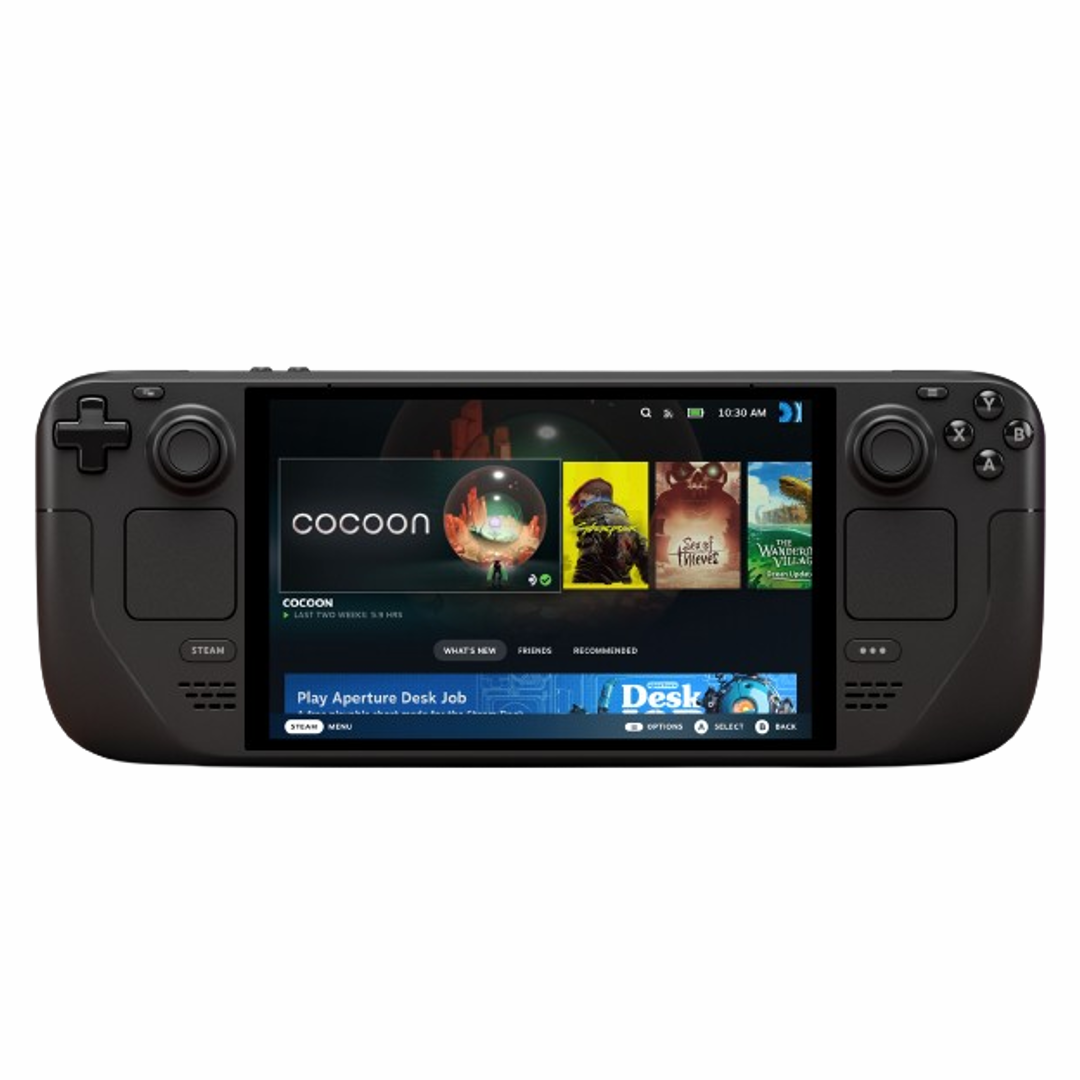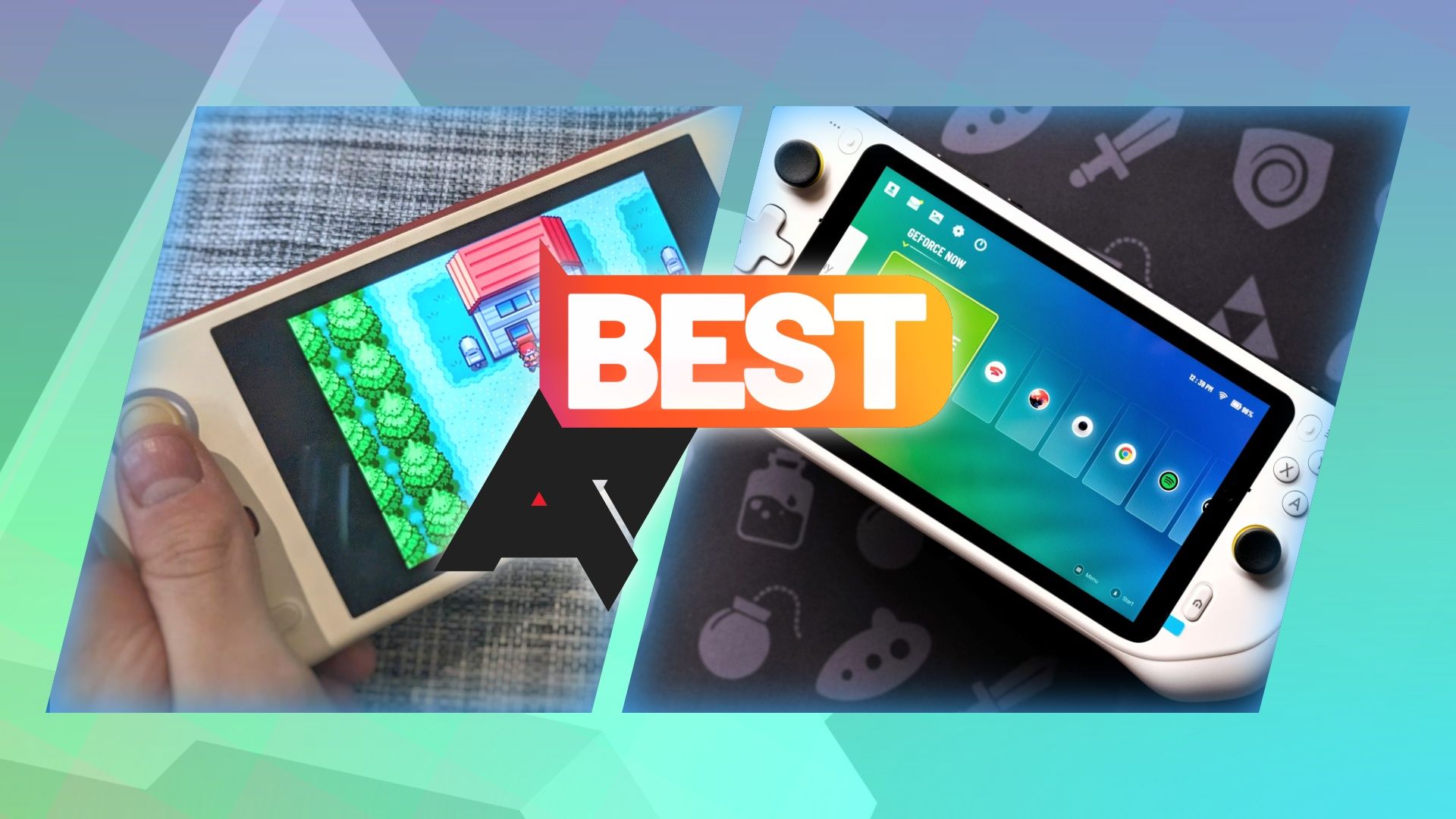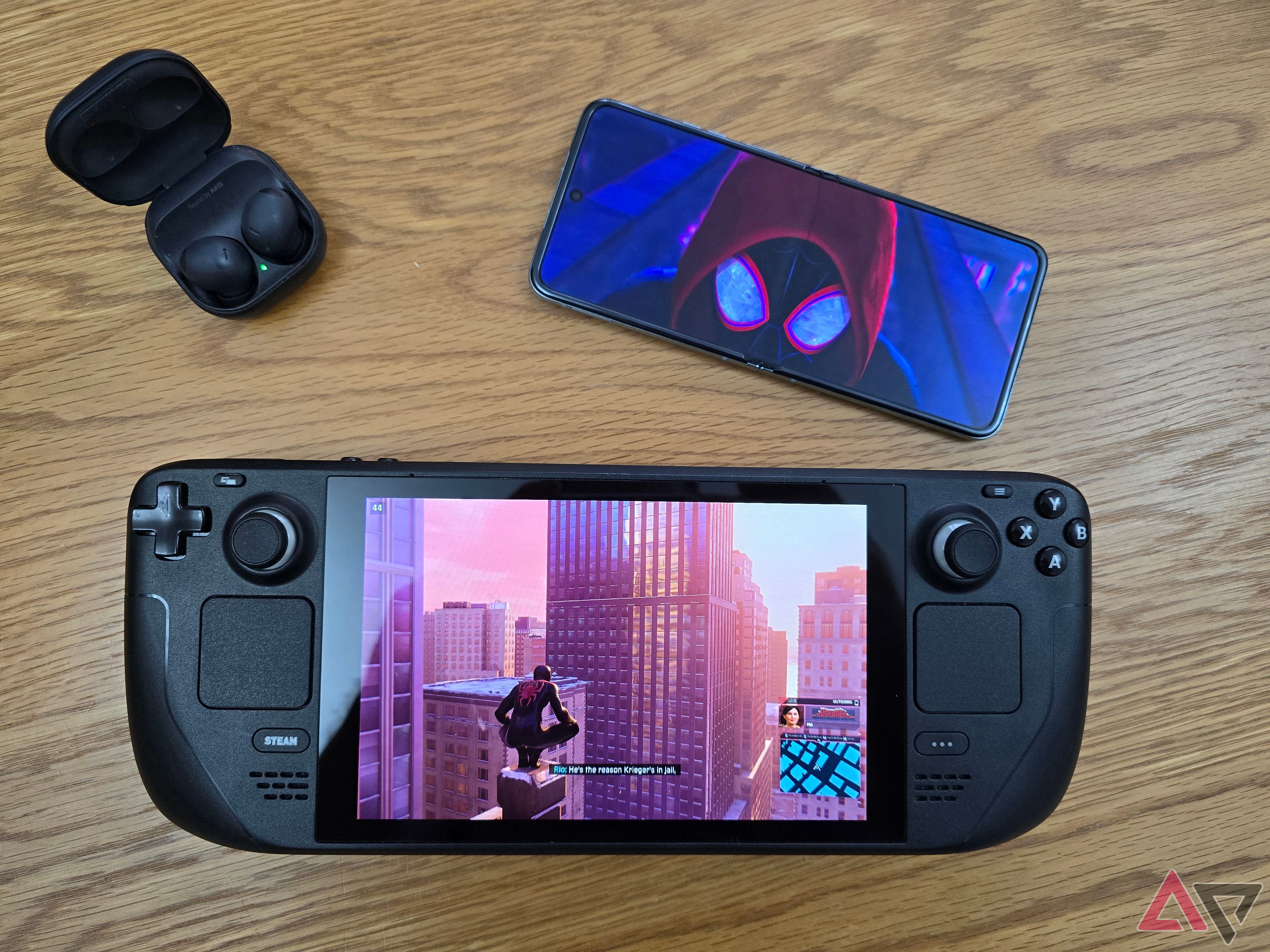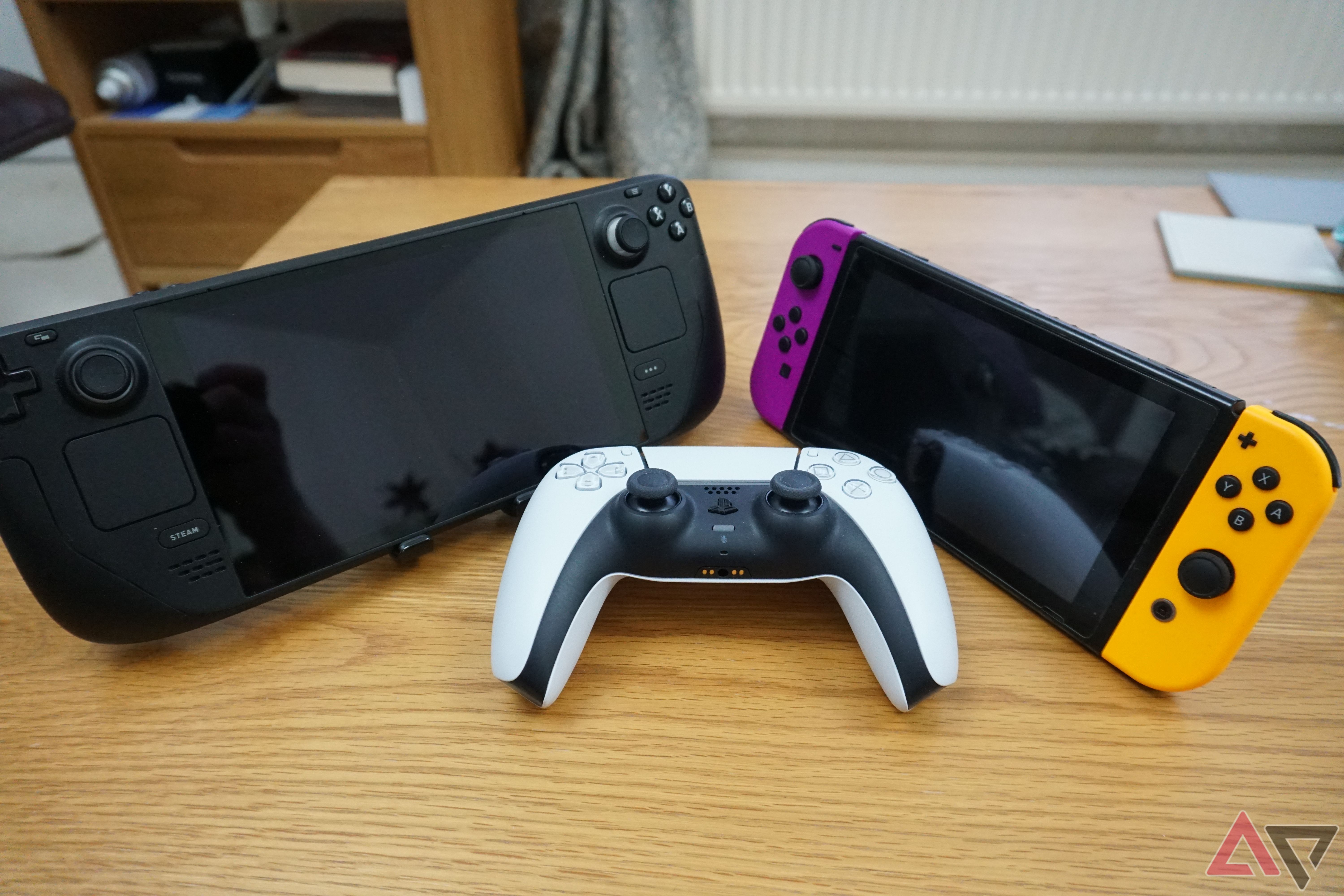Certain pieces of tech feel special from the moment they are announced, long before anyone gets to use them. Valve’s announcement of the Steam Deck was one of those moments. These gaming handhelds were already around, but they cost far more than most people would be willing to invest.
The Steam Deck is a gaming handheld that changed the future for the better. It inspired others to create devices like the ROG Ally in this sector. These great gaming handhelds have even made us question whether or not they could kill mobile gaming. Two years on, is the Steam Deck still something that deserves your money?

Steam Deck
The Steam Deck revolutionized gaming handhelds and put all of the usual OEMs on notice. Now, a powerful handheld was not only possible but affordable, and the rest of the industry would need to up their game as a result.
- Expansive library of games
- Solid performance
- Intuitive UI
- Input options
- Battery life
- Weight
- Heat generation
Price and availability
The Steam Deck is available directly from Valve in the US, Canada, EU, and UK and starts at $400. It can also be purchased in Japan, South Korea, Taiwan, and Hong Kong via KOMODO. That $400 gets you the 256GB LCD model I’m reviewing today. Pay $550 and get the new OLED model with 512GB of storage, or $650 for the 1TB OLED model.
Valve is still selling off the remaining stock of the old 64GB and 512GB LCD variants for $350 and $450, respectively, but that’s only while stocks last.
Specifications
- Dimensions
- 298 x 117 x 49mm
What’s good about the Steam Deck?
The Steam Deck’s software is an enormous strength. It runs on Arch-based SteamOS 3 with the Plasma desktop environment, while most other handhelds of this type run Windows. Each has pros and cons, but the pros of SteamOS far outweigh the negatives. What Valve had to work against most was game compatibility. Most games never get native Linux ports, so Valve had to devise a way to get these games running.
In 2018, Valve released Proton, a compatibility layer that allows Windows programs to run on Linux. The Steam Deck significantly upgraded Proton, and now almost all the games I’ve encountered run just fine on it. Sometimes, a game needs to be updated to add support, but popular titles have mostly done so.
The pros of this approach are the ease of use. The Steam Deck doesn’t boot into a desktop environment designed for a keyboard and mouse. Instead, it boots into Steam with a UI purpose-built for controllers and touch input. Windows machines like the ROG Ally boot into a Windows Desktop, which is cumbersome on a device like this. While it can use the Steam Deck’s UI once Steam is open, you’ll have to activate it on each boot.
The Steam Deck is compatible with many games, but how well do they run? The custom 7nm APU from AMD, with 16GB of RAM and RDNA 2 graphics, does an admirable job. Titles like Rocket League and Apex Legends can run at high frame rates with medium settings, while less demanding titles like Stardew Valley or The Sims 4 run like a dream with no issues.
Demanding games like Horizon: Zero Dawn, Marvel’s Spider-Man, and Marvel’s Miles Morales run surprisingly well. Zero Dawn manages a consistent 45-50fps on medium to high settings, higher than the PlayStation 4 ever managed. The two Spider-Man games, when on low-medium settings, manage 35-45fps.
I haven’t been able to try Horizon: Forbidden West on the Steam Deck yet, but preliminary results seen online indicate that Deck struggles to run it for now, but patches may improve the situation. Another benefit to the Deck sharing your Steam Library is the management of Steam Workshop mods and game saves. It syncs across the cloud so that you can switch between Deck and PC at will.
The display is absolutely beautiful, so long as you get the OLED. My LCD model is fine; there’s nothing wrong with it. But the OLED model is fantastic. It ups the refresh rate to 90Hz, which makes a big difference in titles that can achieve that kind of FPS, but the real win is brightness. This HDR panel can reach 1,000 nits of peak brightness, overcoming even direct sunlight.
Expansion of the Steam Deck is another strong point. There’s a MicroSD slot, which is more than good enough to run games like Stardew Valley, Sims 4, and even Subnautica. The internals of the Steam Deck are upgradeable, too, if you’re brave enough.
Valve has made spare parts readily available and published detailed instructions for performing certain repairs. Installing a larger SSD should be no issue if you have the needed tools and know-how. You can also buy docks that plug into the USB-C port to add HDMI, Display Port, USB, Ethernet, and even M.2 expansion.
My favorite part of the Steam Deck is, by far, the controls. You get the usual buttons you’d expect, but you also get two touchpads that can act as mouse trackpads. This makes navigating the Sims 4 or Star Wars Empire At War much easier than using the joystick as mouse input. All the inputs are remappable per game, and you can even import control schemes other players have made.
So, what kind of experience does all of that add up to? A great one. Due to the health issues of both myself and my family, I spend a lot of time in hospital waiting rooms for hours at a time, often without much notice. For this reason, I always keep the Steam Deck charged in my backpack with a spare set of earbuds and a battery pack. Once I’m settled into the waiting room and logged onto the Wi-Fi, all of my games, complete with saved data, are there in the palm of my hands.
In the past, I’d pass the time with mind-numbing mobile games or whatever I had on the Switch. The Steam Deck removes those limits, distracting me with more immersive titles. Horizon: Zero Dawn has been my comfort game since its launch, and having it there during trying times has proved invaluable.
What’s bad about the Steam Deck?
The Steam Deck is in no way perfect, and there are downsides you should know about before buying. The biggest issue is battery life. The Steam Deck uses a 5,200mAh cell, comparable to the 5,000mAh battery in my Galaxy S24 Ultra. While that’s more than enough to get a smartphone through a full day of hard use, a Steam Deck uses a lot more juice, and that battery doesn’t last long. Heavy games like Spider-Man will kill it in under two hours, with only lightweight games like Stardew Valley getting the claimed eight hours. The OLED gets better numbers, but not by much.

Samsung Galaxy S24 Ultra review: Still the best, unless you take photos
Without any meaningful changes, Samsung’s latest phablet feels like a do-over for last year’s smartphone
The Steam Deck also gets very hot very quickly. Performance remains consistent, but the back of the Deck will be warm to the touch, and a lot of hot air gets vented out of the top. The fan is a little bit loud as well. You won’t hear it with headphones on, and the built-in speakers overcome the noise, too, but if you’re playing in bed, the person next to you might not appreciate the whine.
The Steam Deck is big and heavy. There’s no getting around that fact. I have no problem using it for extended periods when sitting up, but using it in bed quickly leads to stiff arms.
My wife found that playing on the Deck led to sore joints in any position that didn’t have the Deck resting on a table. Sadly, this is how things will be for full-fat gaming handhelds like this. The Nintendo Switch can only overcome the weight problem by using Nvidia tablet hardware that’s a decade old.
Performance is also starting to become a con. I know I was positive about performance just now, but newer games are already straining the Steam Deck’s hardware, and that will only get worse with newer and more demanding titles. The screen, at least on my LCD Deck, struggles. While the OLED can reach 1,000 nits of peak brightness, the LCD taps out at 350 nits, so direct sunlight is an issue.
Software is a bit of a con, despite the glowing praise I heaped upon it in the last section. Those positives all hold true, but it’s far from perfect. Launchers like the Epic Games Store or the EA Launcher don’t have Linux versions. They must be run through Proton, set up, and installed in the desktop environment.
If you’re familiar with Linux, you should be fine, but I found it daunting, and the average user will likely want to avoid that kind of work. The Xbox launcher doesn’t work at all, meaning you can only access Game Pass if you have the Ultimate subscription with access to streaming.
Should you buy a Steam Deck?
Yes, you should, provided you know what it can and can’t do. The Steam Deck is my favorite gaming device besides my custom gaming PC, and I even gravitate toward it over my PS5. Being able to play almost all of my Steam Library on the go is something I never thought I’d see.
But that’s my Steam Library. Before buying a Steam Deck, check that the games you play most will run well on it, and go into the experience knowing that many upcoming games might be out of reach.

Steam Deck
The Steam Deck isn’t perfect, but if it meets your requirements and your Steam Library is compatible, this could be your ultimate gaming handheld.

Best Android handheld consoles in 2024
From retro handhelds to streaming powerhouses, there’s an Android handheld for every situation




